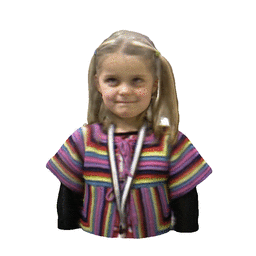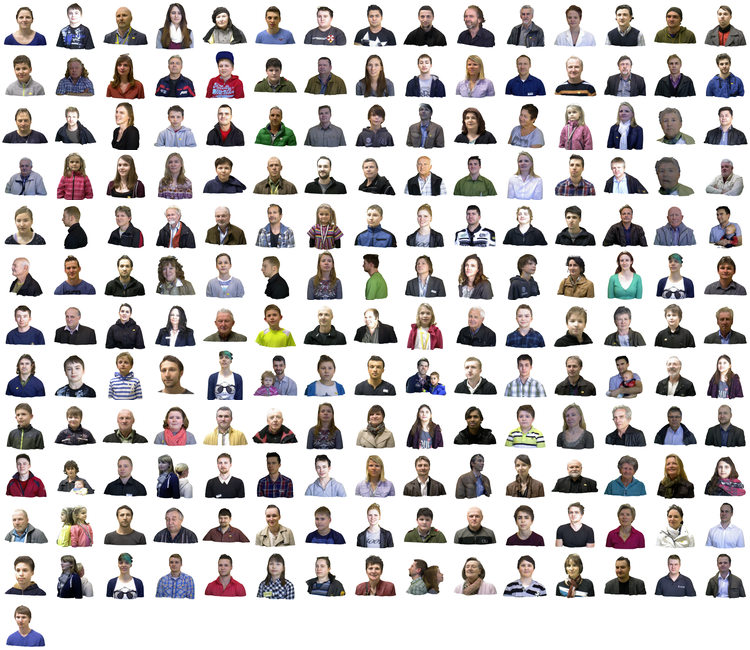We are thrilled to announce that today’s ReconstructMe release includes a Selfie 3D technology, a feature that allows you capture 3D printable self-portraits. We developed Selfie 3D so you could simplify the process of generating 3D printable busts of yourself and your friends, just like the one below.
The current Selfie 3D feature is best used for generating head-to-shoulder busts. To use it, simply activate Selfie 3D and turn in front of your camera. The tutorial covers the basic steps and has some invaluable tips and tricks for creating the best possible busts. So don’t miss it!
Is the output directly printable?
Yes! Post-processing is fully automatic. We’ve put a lot of efforts into the automatic post-processing of your scan. Here’s what happens behind the scenes.
- Making it watertight
- Watertight refers to a property of 3D meshes that allows the 3D printer to determine the inside and outside of meshes. A mesh without holes is often referred to as watertight, because when you fill-up the inside with water, no water will drop out. ReconstructMe will enforce this property.
- Creating a planar stand
- ReconstructMe slices the model on the bottom to generate a nice planar stand of your bust, so that it does not fall over when being put down.
- Fixing the orientation
- ReconstructMe will place the origin of the model on the center of the base of the bust with positive z-direction pointing upwards towards its head. This will allow you to directly import the bust in your favorite 3D printer application or printing service and your bust should already be placed on the printer’s virtual platform.
- Scaling it down
- Since your 3D printer won’t be able to print you in full-size, ReconstructMe scales your model down to 20cm when saved. Note, the saved model dimensions are in millimeters.
Need even more info? Make sure to check out our blog post about ReconstructMe SDK 2.1 and stay tuned for further blog posts covering this feature.
How long does post-processing take?
Usually, post-processing takes between 15 and 25 seconds. The time increases on a low-powered machine or when you don’t have a ReconstructMe license. We used the Selfie 3D feature during the Long Night of Research, were we gathered over 150 scans in 3 hours. To view all scanned models, click the image below.
Amazing, isn’t it? Tell us about your favorite scan! And don’t forget to download.
Download 2.1.348 for Vista/7/8



Hi there:
My company built a ToF camera, and the depth qualilty you could also find in video, the camera already integrated with OpenNI 1.5/2.0. We will release a tiny dongle could be hosted on smartphone. Do you think is it possible to porting your application on Android device? we already porting our DepthGenerator on Android and it works well.
Cheers,
Hi Luke,
we currently require a powerful GPU for our computations, which is not possible on current mobile devices. However, we’ve successfully used Android in the past to just stream the data in real-time to a computation backend and stream back the reconstruction result. Might this be of interest to you of?
Maybe we should discuss this offline. Could you contact us via info [at] reconstructme [dot] net?
Best,
Christoph
Thanks for this product! I’m excited to use it more often!
When I am scanning, everything looks great until I save the file & import it to my MakerBot Makerware. When I do so, a number of spheres appear and I cannot print, or it resizes my selfie to fit all of the spheres, making the bust very small.
Any ideas on why this is happening? I’m in an evenly lit area & have tried others and cleaned the lens of my Kinect to remove any dust or debris.
Thanks!
Hi I have a question. I have a working license with V 2.0.199
I downloaded V2.1.348 to get the 3D Selfie and my license won’t work anymore.
Do I have to pay for a new license?
Domenick
My Hardware Hashes with V2.1.348 are:
hashes: “pLI9glwBw4Qrl2g4hgsYpA==”
hashes: “f+pIJK7E7xNUAnKSiVUEJA==”
hashes: “K+jWJAWuxkXPCdXKcwXmkQ==”
hashes: “kX71/gQCoCeQGBAFgSJvAQ==”
hashes: “EN5MUiWQv/6/3CUBbKGuGA==”
hashes: “HLRh+TH+RQyDIYEjiJ6/4Q==”